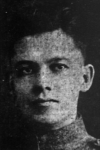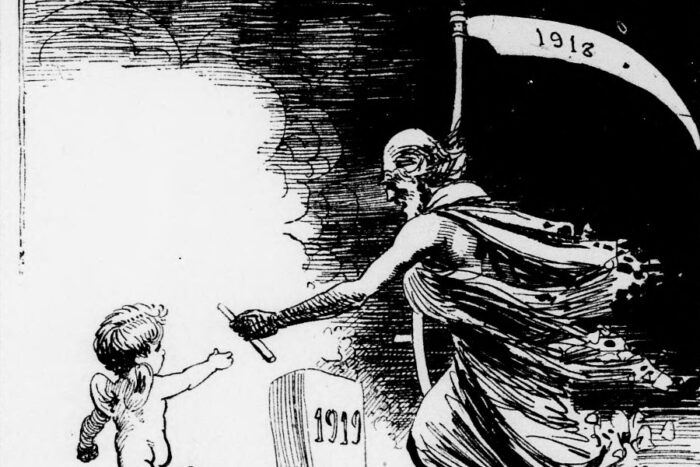
It looks like it will be a quiet New Year’s Eve today on Capitol Hill, and I thought about historic precedents for this. The closest I could come was 1918, the year that the first World War ended, and the country was ravaged by a pandemic. So, what did those celebrations look like?
Pretty quiet, as it turned out. This had a number of reasons. First, the weather did not cooperate; second, there were still aftereffects from the war; and finally, there was no booze.
Even before it became clear that the weather was not going to allow for any great outdoor activities, the plans were not too wild. At 11:45 PM, there was to be the performance of the pantomime “The Herald of Peace” by the Pittsburgh dancer Karl Heinrich, followed at 11:58 by someone dressed as Father Time walking slowly up the steps of the Capitol, so that two minutes later a “cherub typifying the new year” could emerge. Thereafter, there was to be dance with music by the Marine Band around the Christmas Tree that had been donated by the Washington Evening Star on the East Front of the Capitol. The Star hoped that some 50,000 people would show up for this, though they feared that the weather would interfere.
Beyond this, the celebrations were restrained, and an article on page 5 of the Star went some way to explaining why: Soldiers wounded in the last few months of the war in Europe were still trickling back, and on December 30, six more local boys had been admitted into Walter Reed Hospital. This included two Capitol Hill residents, Corporal William Iseman of 11th Street and Private Edward Sweeney of 15th Street. Neither was badly injured, and would soon return to their previous jobs, Iseman as a route agemt for the Evening Star, Sweeney as a machinist at the Navy Yard. Coincidentally, both would die quite young, in 1937. Both are buried in Arlington Cemetery.
There is remarkably little in the newspapers of the day of the other great scourge, the Influenza epidemic that had been raging for almost two years at this point. While some advertisements tout their products’ efficacy against the dread disease, the possibility of infection did not seem to be high on the list of things worried about. Not that the danger was past. On December 31, one of the heroes of the air war, William Leefe Robinson, who was the first pilot to shoot down a German airship over Britain, had succumbed to the flu. He had been a prisoner of war for the latter months of the conflict, and it was feared that his immune system was not up to the challenge of the virus after he returned home.

And finally, yes, this was the second new year’s eve in the nation’s capital that was to be celebrated – nominally – without the aid of intoxicating liquids. While some either still had a few bottles secreted away, or maybe had gone to surrounding states that had not yet banned the demon rum, there was some indication that a lack of booze did indeed reduce the open consumption of alcohol.
In the end, the Star’s fears about the weather proved to be correct, and celebrations had to move indoors, whether in to hotel dining rooms or private homes – or church services for those so inclined. Only briefly did the festivities spill outside, as the Star wrote the next day:
At midnight, however, the participants in these gatherings ran out into the streets for a brief demonstration of merrymaking while whistles blew and church bells chimed.
